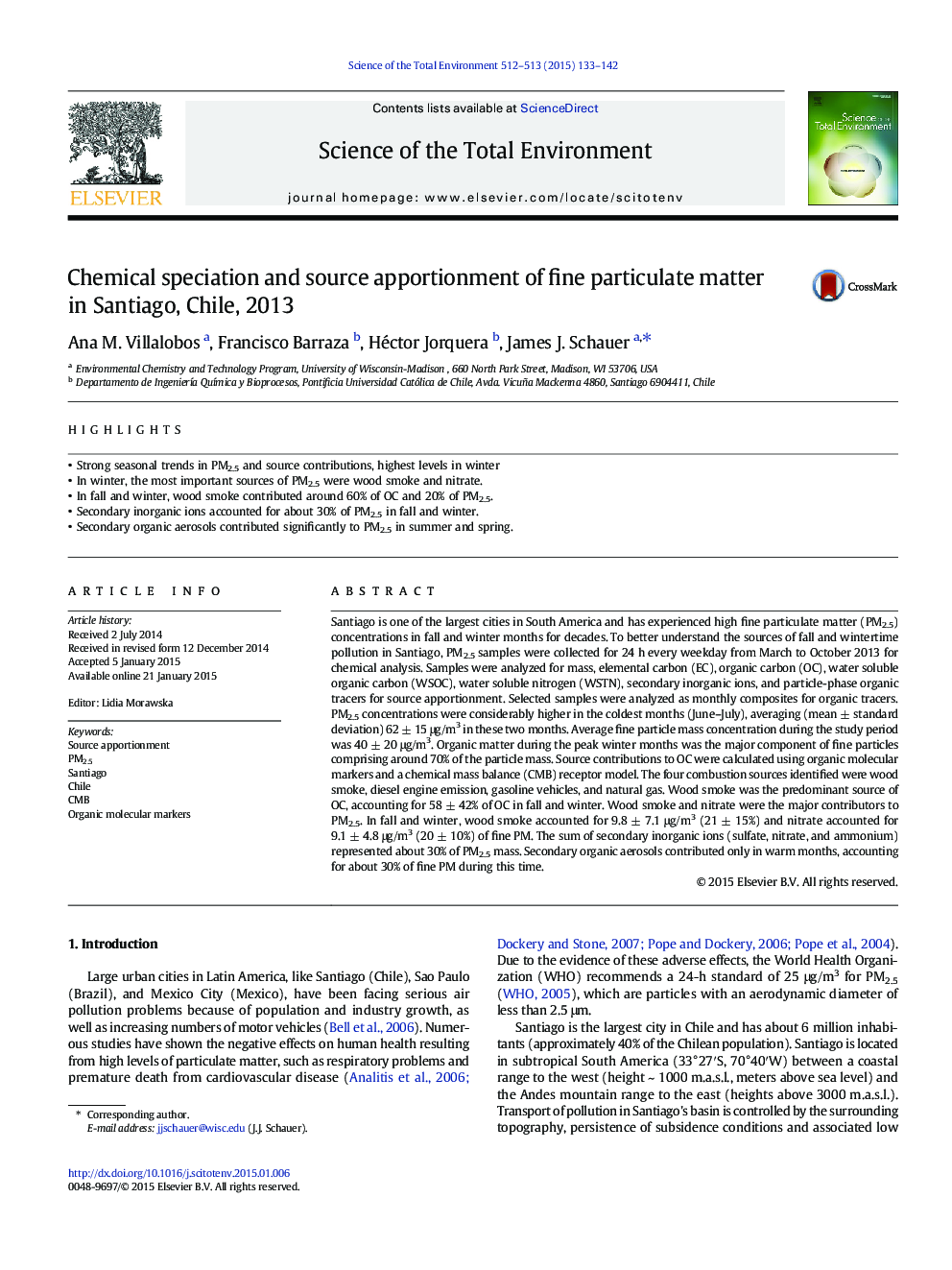| کد مقاله | کد نشریه | سال انتشار | مقاله انگلیسی | نسخه تمام متن |
|---|---|---|---|---|
| 6327156 | 1619765 | 2015 | 10 صفحه PDF | دانلود رایگان |
- Strong seasonal trends in PM2.5 and source contributions, highest levels in winter
- In winter, the most important sources of PM2.5 were wood smoke and nitrate.
- In fall and winter, wood smoke contributed around 60% of OC and 20% of PM2.5.
- Secondary inorganic ions accounted for about 30% of PM2.5 in fall and winter.
- Secondary organic aerosols contributed significantly to PM2.5 in summer and spring.
Santiago is one of the largest cities in South America and has experienced high fine particulate matter (PM2.5) concentrations in fall and winter months for decades. To better understand the sources of fall and wintertime pollution in Santiago, PM2.5 samples were collected for 24 h every weekday from March to October 2013 for chemical analysis. Samples were analyzed for mass, elemental carbon (EC), organic carbon (OC), water soluble organic carbon (WSOC), water soluble nitrogen (WSTN), secondary inorganic ions, and particle-phase organic tracers for source apportionment. Selected samples were analyzed as monthly composites for organic tracers. PM2.5 concentrations were considerably higher in the coldest months (June-July), averaging (mean ± standard deviation) 62 ± 15 μg/m3 in these two months. Average fine particle mass concentration during the study period was 40 ± 20 μg/m3. Organic matter during the peak winter months was the major component of fine particles comprising around 70% of the particle mass. Source contributions to OC were calculated using organic molecular markers and a chemical mass balance (CMB) receptor model. The four combustion sources identified were wood smoke, diesel engine emission, gasoline vehicles, and natural gas. Wood smoke was the predominant source of OC, accounting for 58 ± 42% of OC in fall and winter. Wood smoke and nitrate were the major contributors to PM2.5. In fall and winter, wood smoke accounted for 9.8 ± 7.1 μg/m3 (21 ± 15%) and nitrate accounted for 9.1 ± 4.8 μg/m3 (20 ± 10%) of fine PM. The sum of secondary inorganic ions (sulfate, nitrate, and ammonium) represented about 30% of PM2.5 mass. Secondary organic aerosols contributed only in warm months, accounting for about 30% of fine PM during this time.
Journal: Science of The Total Environment - Volumes 512â513, 15 April 2015, Pages 133-142
